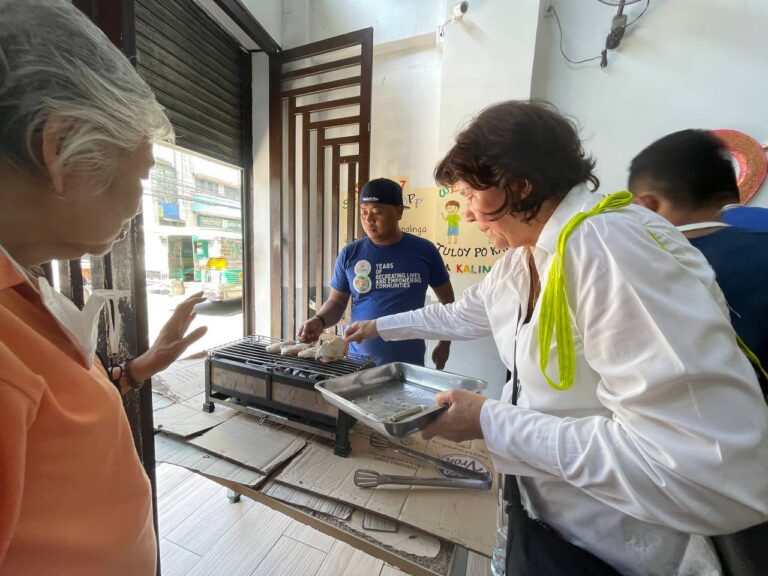By Nirva Delacruz
One kilo of rice and ¼ kilo of sticky rice could feed 50 mouths?
It almost sounded impossible, but that’s what some of our dear partners-in-mission, Anna Katigbak, Lelen, and Cristina Tabora promised us with their special secret recipe of fortified chicken arroz caldo, also known as “Yahong ni Thérèse”.

St. Thérèse’s lugaw
On August 12, the three ladies visited the Arnold Janssen Kalinga Center to share their tried and tested recipe that they had used to feed a record 16,000 people when the relics of St. Therese visited Bacolod in 2023. The Carmelite nuns had assigned the ladies to take on the daunting task, and they literally fed thousands of people piping hot, nutritious rice porridge—all on a lean budget.
“[Sharing the recipe to the AJ Kalinga Center team] is a better way to solve one of the biggest health crises without the use of synthetic preparations,” explained Lelen. “The arroz caldo is whole food and culturally accepted by the people. It’s inexpensive and very affordable, it gets communities to move together towards helping each other and it’s sarap!” she added.

‘Nutrient-rich’
Unlike the usual lugaw Filipinos are familiar with, their recipe did not require any sautéing. Many of the ingredients simply have to be prepared and mixed with the washed rice and dropped into boiling hot water. AJ Kalinga Center resident volunteers listened attentively as they noted that the magic difference was in the monggo, the turmeric, and the malunggay leaves that made the dish extra nourishing. Specifially, the monggo is not boiled but just soaked overnight to let is sprout, changing the water thrice. Lelen said it is best to rub the beans together to remove the outer covering “for digestibility and better absorption of vitamins, minerals, and proteins.”
Over-all, Lelen said their first lugaw workshop was “very rewarding”, and they observed how the resident volunteers marveled at the little “miracles” of the recipe like the use of 17 liters of water for the “1 kilo of rice+ 1/4 kilo of sticky rice”; removing the monggo bean covering; and most of all, the balanced mix of micronutrients of the arroz caldo.”
The volunteer residents and some of the staff had their lugaw topped with boiled eggs, adobo flakes, green onion, and toasted garlic. Oh-lala!
Gone in 5 minutes!
After serving bowls of the porridge to everyone at the Center, Lelen and Anna also showed the resident volunteers how to make the classic chicken inasal of Bacolod. They used a special volcanic brick grill that made cooking the meat so much faster.

In less than an hour, everyone had a chicken inasal barbecue in his hand. And they were gone in 5 minutes! The chicken had that unique Bacolod inasal flavor. Over-all, it was a morning well spent. According to Lelen, “The arroz caldo carries many spiritual benefits: caring of neighbor and promotes compassion and empathy when sharing the big pot of Goodness. It really brings people together to support one another with joy.”

